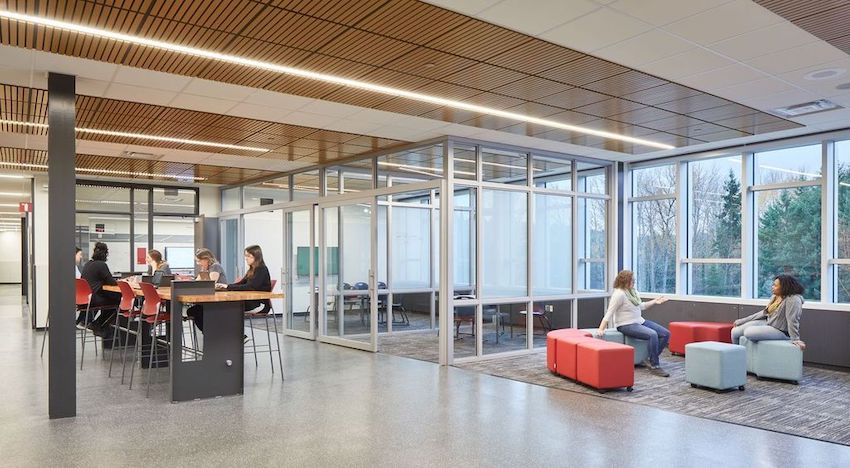A Lean Operation: Strategies for Creating Space-Efficient and Accessible Interiors with Sliding Door Systems
![]() Continuing Education
Continuing Education
Use the following learning objectives to focus your study while reading this month’s Continuing Education article.
Learning Objectives - After reading this article, you will be able to:
- Receive more information about sliding door’s touchless technology and the role it plays in mitigating the spread of infection while encouraging healthy motion.
- Explore the ways in which today’s interior sliding door systems use hardware compliance and space-saving efficiencies to meet the required ADA Standards and improve usability.
- Learn how interior sliding doors can improve occupant comfort through enhanced acoustic performance and access to daylight.
- Explain the role design plays in creating sliding door systems that improve accessibility and meet modern aesthetic standards.
From maximizing the existing footprint in retrofits to reducing the spread of infection and supporting the flex needs of the hybrid workspace, this course will cover how interior sliding doors serve as versatile solutions meeting on-the-rise design trends while addressing ongoing space-efficiency and sound attenuation needs. Learn how interior sliding doors can help optimize occupant comfort through the use of daylighting and enhanced acoustic performance. Then, find out how to mitigate the spread of infection through sliding doors systems with touchless technology. Additionally, explore how space saving efficiencies can improve useability, address occupant accessibility challenges and facilitate healthy movement.


|
Tysen Gannon, LEED AP, is director of business development for AD Systems. She has more than 15 years of experience in the architectural products industry, including roles in sales, product management, research and marketing, with a focus on glass and glazing, fenestration and façade systems. |
